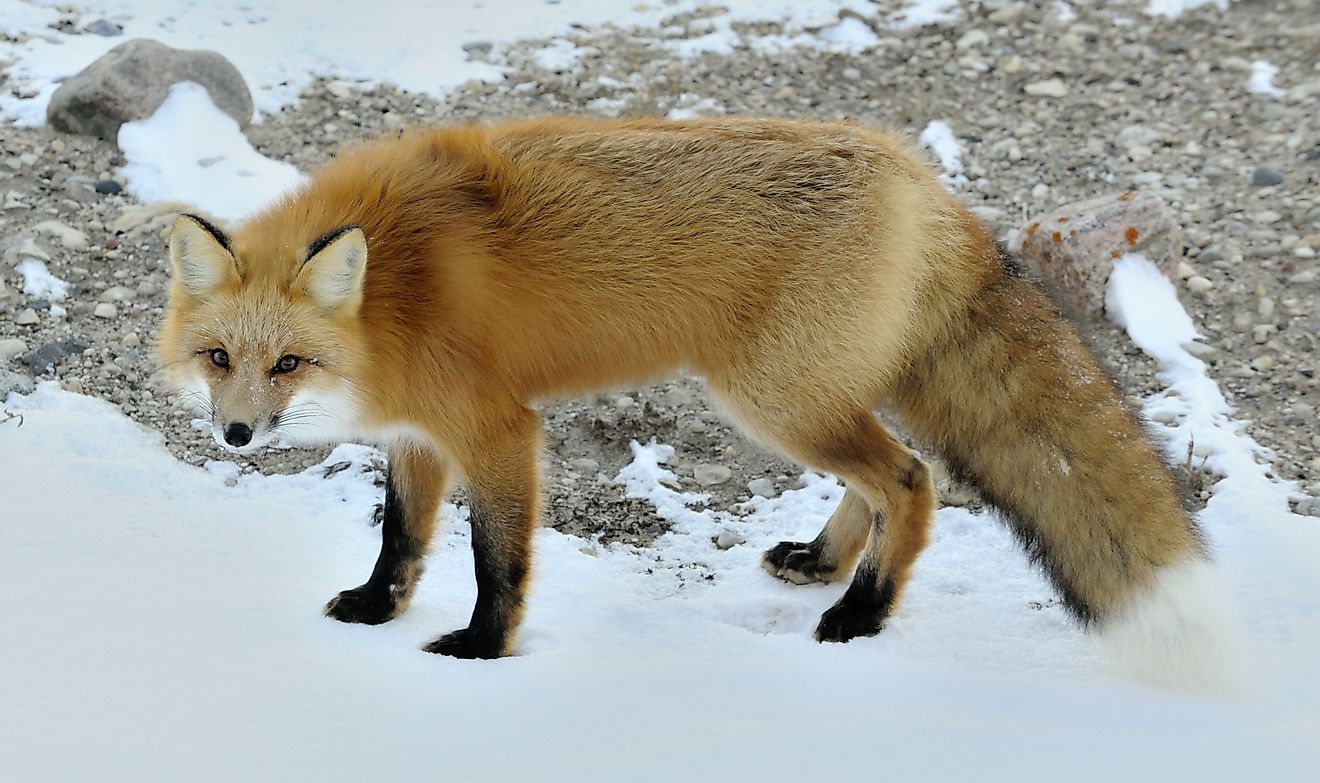Red Fox: Animals of North America

5. Physical Description
The red fox, whose scientific name is Vulpes vulpes, is a small, dog-like mammal, and among the most populous members of the Order Carnivora. While the Red Fox is best known for its large fuzzy tail that constitutes a third of its entire body length, it also has a sharp, pointed face and ears, an agile and lightly built body, and a coat of gleaming long fur. While the fur on its back, sides and head are orange-red, it also has white fur under its neck and on its chest. It is the largest species of the 'true fox' genus of Vulpes. While male foxes are usually larger than females, an average red fox usually weighs between 6.5 to 24 pounds (3 to 11 kilograms), and its average body length spans between around 2.5 and 3.5 feet (90 and 112 centimeters).
4. Diet
The red fox is an omnivorous animal whose diet varies a lot due to local environment and season. Although red foxes mainly prey upon small mammals, including voles, mice, squirrels, lemmings, rodents, rabbits, and birds, they will also eat vegetables and fruits. If they live close to human populations, however, they may also dine on garbage and pet food. Red foxes are very good hunters, and they are very cautious about their food supply. As such, they will plan ahead and continue to hunt even when they are full. They will usually store extra food under leaves, snow, or dirt, and mark the storage locations with their urine.
3. Habitat and Range
While Red foxes live all around the world, they are one of the most widespread mammals in North America. They can thrive in many diverse habitats, including forests, grasslands, mountains, and deserts. They also adapt well to human-inhabited environments, such as farms, suburban areas, and even close to large urban communities. They usually live on the edges of wooded areas, prairies, and farmlands, and typically only build dens to breed within. Their dens are usually 4 to 8 square meters, and are dug into sand and soil. Due to their adaptability and flexibility, they are found to be thriving around much of the Northern Hemisphere, and as an introduced species in Australia.
2. Behavior
Red foxes may either establish permanent home ranges within particular areas, or be itinerants with no fixed abode to speak of. Like many other animals, they use urine to mark their own territories, locate cache sites, and mark their food. But urine does not only mean hostility, as foxes also use it to signal and greet one another. As nocturnal animals, they usually hunt at night. Although they typically forage alone, they will sometimes aggregate in resource-rich areas. Their exceptional senses of sight, smell, and hearing abilities combine to make them excellent hunters. Red foxes are sociable animals, and they will share territory with their family groups. Baby foxes usually leave their family when they reach adulthood, at which time they try to establish territories of their own.
1. Reproduction
One fun fact about red foxes is that they are usually monogamous, just like humans. However, unlike most humans, they reproduce more often, once a year. Each male fox will mark its territory via secretions and urine laden with hormonal scents in early winter, in efforts to attract a potential mate. After pairing, a paired couple will engage in a good deal of affectionate activities together, with the courtship culminating in breeding. Red foxes typically breed in the winter, between late December and the middle of March. After breeding, a couple will seek out a safe and sound den, which may often be an abandoned woodchuck burrow or that of another animal. The female fox gives birth after a little less than two months of mating, to a litter that may range from 2 to 12 pups, while the average number is five. At birth, red foxes are blind, deaf, and toothless, and actually brown or grey. Their shimmering red coast usually takes over by the end of their first month. Red foxes will reach adult body proportions by the age of six to seven months.











